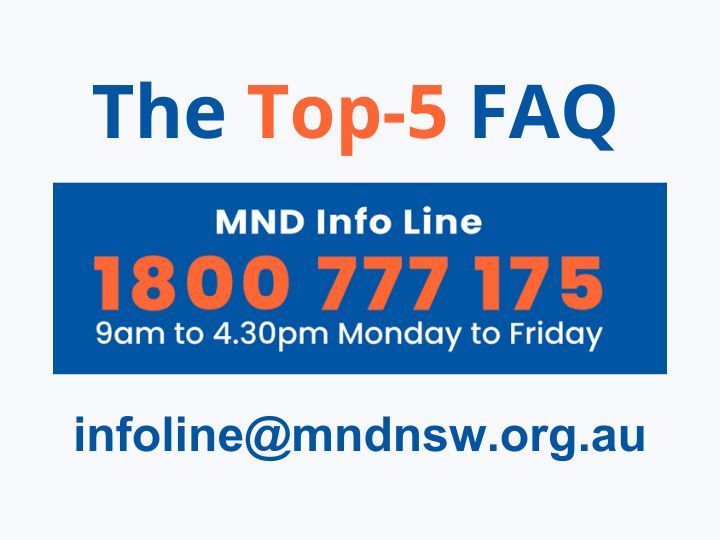Peteris Ginters (MND NSW member) shares what he has learnt along the way
It has been approximately two years since I was diagnosed with motor neurone disease. In that time the strength in my arms and hands has gradually declined to the point where I have gone from being able to use a computer keyboard and mouse (and mobile phone) without difficulty, then with difficulty and now not at all. Obviously, this has had a significant impact on my ability to communicate and remain (semi–)independent and active.
From an early stage I started investigating options that would allow me to have access to a computer so I could use the Internet, send and receive emails and text messages and use of my mobile phone remotely et cetera. I have also spent time investigating some of the voice recording/synthesis options that are available for people with MND. Although I don’t need this type of assistance yet (or, hopefully, in the near future) all the information I read suggested it is better to "bank" your voice sooner rather than later.
I thought it might be useful if I shared my experiences with assistive technology that aids with communication when your ability to use your hands is limited or non-existent. (This article has been written using some of the equipment described below.)
At the outset though a note of caution. I have no particular expertise in the area of assistive technology/communication aids other than that which I have discovered through discussions with my speech pathologist and my own investigations. It would therefore be worthwhile for anybody who wants to look further into these matters to do so in consultation with their speech pathologist.
As my hand and arm strength declined I found a particularly useful way of being able to continue to access my computer was through the use of Dragon voice activated software (which I use in combination with a microphone attached to my computer the Acoustic Magic VT–II.
I have had my tablet computer, microphone and mobile phone mounted on a Pentalock stand. A photograph of my set up is pictured. 
Without wishing to overly complicate the issue my speech pathologist also had me trial (and I ultimately purchased) gyroscopic mouse hardware and software known as Quha Zono. This allows me to control my computer cursor through a small gyroscopic mouse that I attach to my glasses. I use this equipment in combination with Grid 3 communication software to access and use all programs in the Microsoft Office suite as well as the Internet. In addition, I discovered a $20 or so android phone app called Remote Phone Call that, when used with my android phone, Quha Zono mouse and Grid 3 software (mentioned above), allows me to send and receive text messages through my computer, and answer and make phone calls through my computer, without needing to use my hands.
About six months ago I also started investigating what is out there in terms of synthesised voice programs. This is because I was concerned I might ultimately lose my voice and, if that occurs, I want to be in a position where I can continue to communicate using ‘my voice’ rather than a generic computer-generated voice.
My researches have led me to discover there are various options out there, at various price points. Mention of some of these options can be found in an article in the June 2018 news.
There is one product from a British company known as CereVoice Me, the results of which you can see on a demonstration video (for what it’s worth, the synthesised voice quality as shown on the video is quite good. However, the downside of this option is I understand it is you have to pay up front (£499) before you can begin the process of recording sentences to synthesise.
Recently a free software program developed through Project Revoice and an Australian company called Lyrebird was released. I spent a couple of hours reading and downloading the sentences provided with this program (I recall I read approximately 500 sentences, although you don't need to do nearly this many, but the more you do the better the accuracy). When I then went to the next stage and typed some text and played it back with my synthesised voice I was not overwhelmed with the result. The synthesised voice didn't really sound like mine. It may well be though that others will have better results with this software. As it is currently free for people who register it is certainly an option worth considering, particularly if cost is an issue.
The most realistic option I have found to date is produced by a European company called Acapela Group, with the software known as My Own Voice. With this system you can do the upfront work (recording sentences that appear on the screen), and you only have to pay for the product when you want to finally download and use it. That said, there is a capacity in the home page to log in using your login and type and have played back a sample of your synthesise voice for free. That is very useful. The My Own Voice process involves reading back to the computer through a microphone approximately 500 sentences. Often these sentences make no sense. They are designed to create a digital recording of your voice that can be manipulated by the software to create new words. Of course, you don't need to record all 500 or so sentences, but the more you do the greater the accuracy and clarity of the synthesised voice. To record the 500 sentences takes a minimum of four to five hours, as you need to do it in half hour to 45 minute blocks, otherwise you find your voice gets too tired. The synthesised My Own Voice is very good. Indeed, it's a bit disconcerting at first (but in a good way) to hear an extremely close replica of your voice played back to you with a slight digitised/synthesised overlay.
Again, you get what you pay for and unfortunately the cost to download the final synthesised My Own Voice product is, as I recollect it, somewhere in the vicinity of €2000 to €2500, so it may be out of reach for many people. I guess it depends on how important it is for you to have your own voice as a means of communication through a computer if you lose your voice because of MND.
Finally, I should note, that an important selling point of the My Own Voice product is that it is compatible with, and therefore can be used in conjunction with, the Grid 3 communication software.
Peteris Ginters
Article link summary (as at January 2019)
|
Dragon voice activated software |
https://www.voicerecognition.com.au/collections/dragon-professional |
|
Acoustic Magic VT–II |
https://www.acousticmagic.com/products/voice-tracker-ii-details/ |
|
Quha Zono gyroscopic mouse |
|
|
Pentalock stand |
|
|
Grid 3 communication software |
|
|
Remote Phone Call |
|
|
Synthesised voice options |
|
|
CereVoice Me |
|
|
Project Revoice |
|
|
My Own Voice |



